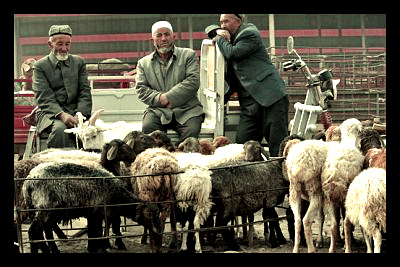Ethnic Tension Stirs Violence in China’s Far West

Xinjiang, China’s far-western region recently witnessed its first new case of violence since the riots that sprung up in June 2013. In the town of Selibuya, a mob bearing axes attacked a police station on Saturday, November 16. In total, 11 people were killed, nine of whom were a part of the mob, and two who were assisting the police.
Xinjiang is home to great ethnic tension, which has led to unpredictable bursts of violence throughout the year. Ethnic conflict exists between Muslim Uighur and Han Chinese communities. The ethnic conflict has created a great sense of instability and posed a major security threat to Chinese leaders.
Many Chinese are blaming the region’s unrest on the Uighur community–ethnic Uighur separatists who make up the minority in an otherwise Han Chinese region. Uighurs are widely known to practice Islam in China, something that is highly monitored by the authorities.
Some of the Uighurs who have carried out violent attacks in Xinjiang are believed to be tied to terrorist operations overseas. When interviewed, Uighurs deny such claims and instead argue against the growing disparities in class between their community and the dominant Han Chinese community.
The Uighur minority argue that the Mandarin-speaking Han Chinese receive many more jobs than them because they must face Mandarin language barriers, which often disqualifies them in the running for jobs. Uighur communities continue to grow upset, as economic development has led huge numbers of Han Chinese to areas traditionally occupied by Uighurs. The socioeconomic discrimination that the Uighur community feels, coupled with increasing ethnic tension between themselves and Han Chinese have created many violent uprisings over the years.
The first outbreak of violence this year occurred in June in Xinjiang’s city of Turpan when a mob wielding knives stormed police stations and a government building. The riot resulted in the death of 27 people, after rioters who stabbed civilians and lit police cars on fire were shot down by the police force. Although the origin of this riot was never confirmed, it is believed to have stemmed from the oppression and aggravation of the Uighur community by the Chinese government.
As an Islamic minority, Uighurs face pressure from many sides to conform to the dominant culture and give up certain practices like men growing beards and women wearing the veil. Ethnic division and violent turmoil will continue in Xinjiang as long as the tension between Uighur communities and the Han Chinese exist.
– Chante Owens
Sources: BBC News, The Wall Street Journal
